Beyond the Memecoin Surge: A User Acquisition Post-MortemThe User Acquisition ChallengeThe Memecoin Mirage
The User Acquisition Challenge
At Flipside, we have the unique opportunity to sit side-by-side with growth leaders across the crypto industry. From Layer 1 blockchains moving billions in daily volume trying to build their developer community to scrappy new L2s trying to carve out their niche, we've seen it all.
And despite their differences, it seems like everyone is banging their heads against the same wall:
How in the world do I get users?

We've tackled one aspect of this question in our Airdrop Paradox blog, where we explored how token incentives often fail to create lasting engagement.
That conversation centered around token distributions and initial ecosystem bootstrapping – essentially how to get your protocol or chain off the ground.
But what about established chains looking for their next wave of growth?
When faced with this challenge, ecosystem leaders typically consider two paths:
Option 1: Throw money at the problem – Unload clips on incentive programs, pay influencers to shill your protocol, and pump out marketing content like there's no tomorrow.
Option 2: Chase the next big thing – Try to spot viral trends early and jump on them before everyone else does.
The recent explosion of memecoins is a perfect example of Option 2.

Almost overnight, everyone across the industry was racing to develop and deploy their own version of “a memecoin strategy.”
Some tried halfheartedly to build their own Pump.Fun alternatives with a big community push to kingmake a select few memes. Others rushed to create liquidity pools for "bluechips" like $TRUMP on their DeFi protocols.
The FOMO was real – nobody wanted to miss the next big user acquisition wave.
But here's the thing: most of these initiatives launched too late.
By the time teams had scrambled through development and deployment, the memecoin fever was already breaking. And even for those who caught the wave at its peak, was it really worth it? That's the question we set out to answer.
The Memecoin Mirage
Here's our hot take: even if your ecosystem had perfectly timed the memecoin boom, it wouldn't have moved the needle on sustainable growth.
Think of memecoin traders like Vegas tourists.
They show up with dreams, make a few spins at the roulette wheel, and then they're gone – either celebrating a lucky win or leaving without their shirt.
Either way, they're not sticking around to become regular patrons.
Sure this is easy to say, and the meta has already swung back to fundamentals, but we dug into the data anyway.
What we found confirms what many suspected but few wanted to admit: memecoin traders make terrible ecosystem users.
The Data Story: Memecoin Traders vs. Ecosystem Engagement
Flipside conducted a study analyzing broader DeFi behavior of 100,000 users who traded the top 1,000 memecoins over the last 180 days.
The findings are revealing - only about 1,000 of these users have interacted with the analyzed Solana DeFi protocols over the last two quarters:
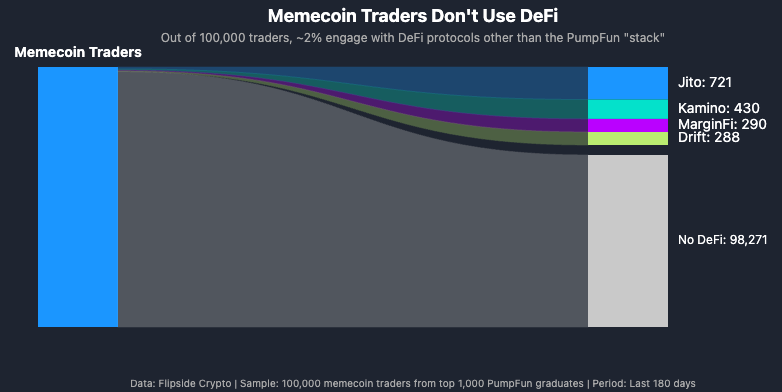
Putting this in the perspective of Flipside User Scores — again, something discussed in our last blog that we will continue writing about — broader ecosystem engagement from this cohort is abysmal:
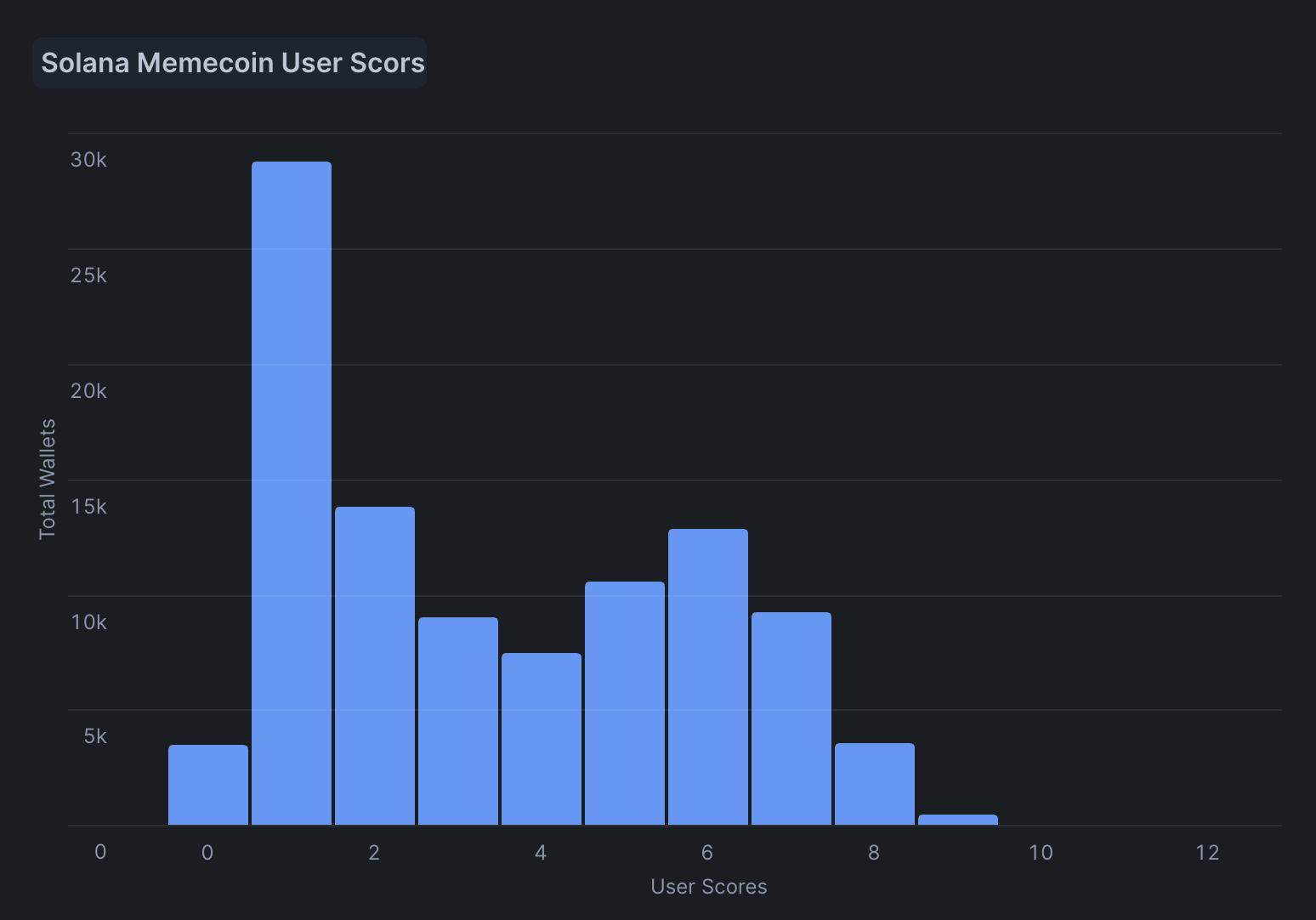
Over 60% of users have a User Score of 0-4, with the highest concentration in the 0-1 score range.
Flipping memes in the trenches will earn you some points, but a lack of meaningful engagement clearly stands out.
None of this is to say that Solana did anything wrong or is destined to fail - their DeFi ecosystem is thriving without these users.
What we are saying, is that while memecoin trading brought addresses to Solana, it failed to convert them into valuable ecosystem participants. Thus, any strategy built to capture some of these flows was failed from the start.
Transaction Patterns: The Power Law of Engagement
To hammer this home a bit, we took a look at a few top protocols on Solana: Jito, Kamino, MarginFi and Drift.
First, we took a look at Jito, the leading liquid staking protocol on Solana. At the very least, we had assumed that users would sweep some SOL gains into jitoSOL to avoid inflating away some of their games via validator emissions.
Unfortunately, this was not the case:
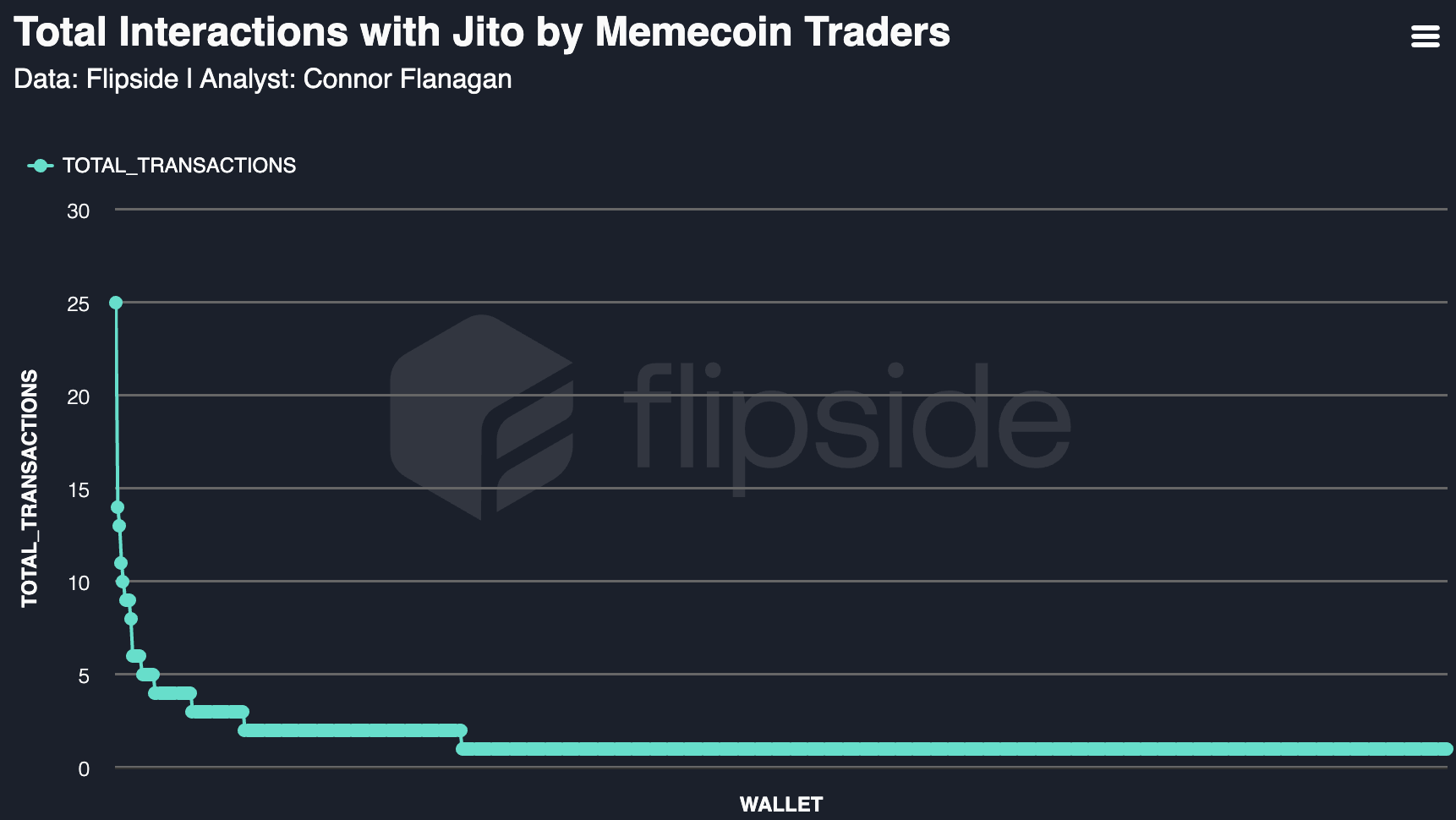
Of the 100,000 memecoin traders analyzed, only 0.71% have liquid staked any SOL with Jito in the last 180 days. In total, approximately 62,000 SOL has been staked for jitoSOL—representing just 0.4% of Jito's current TVL (as of April 2025).
More telling is the concentration of this capital: 93.12% of the staked SOL came from just 9 wallets.
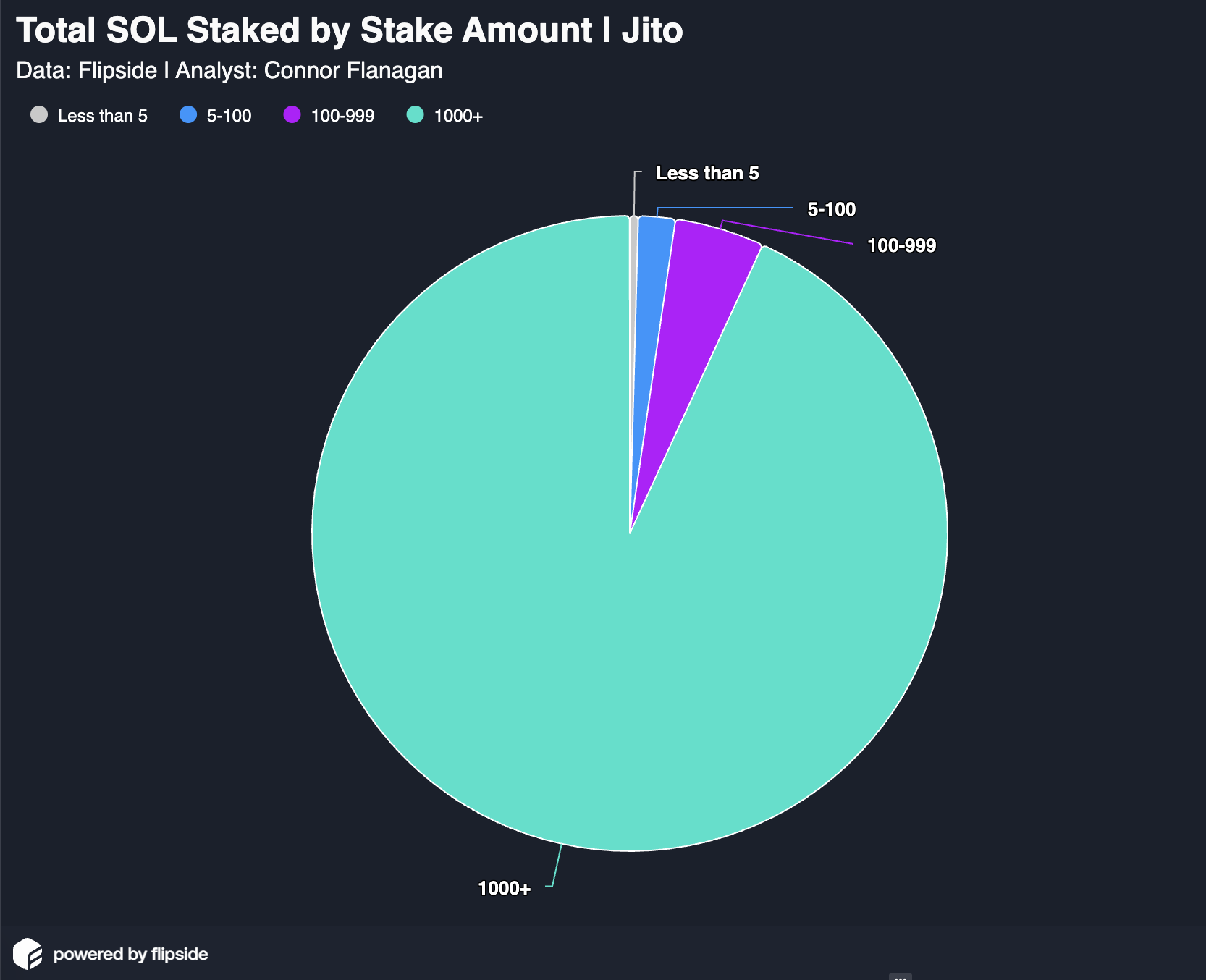
Furthermore, 88.34% of stakers accounted for a mere 0.43% of the total staked SOL (264.3 SOL). This extreme concentration highlights the superficial nature of memecoin trader participation in core ecosystem infrastructure.
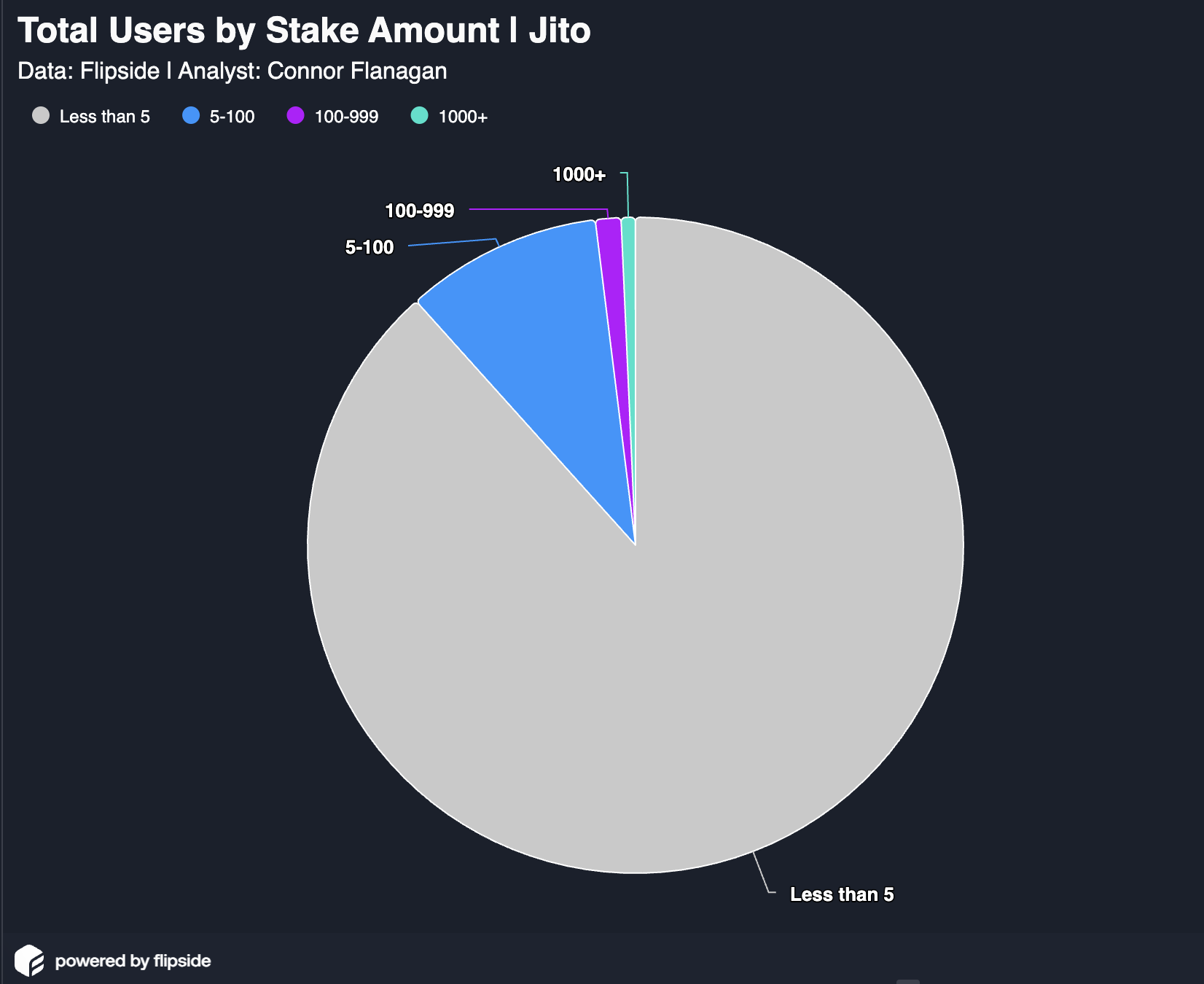
Looking at transaction patterns across protocols like Drift further reinforces our findings. While we hoped that more risk-on traders like the memecoin community would venture into the perps market, this proved not to be the case:
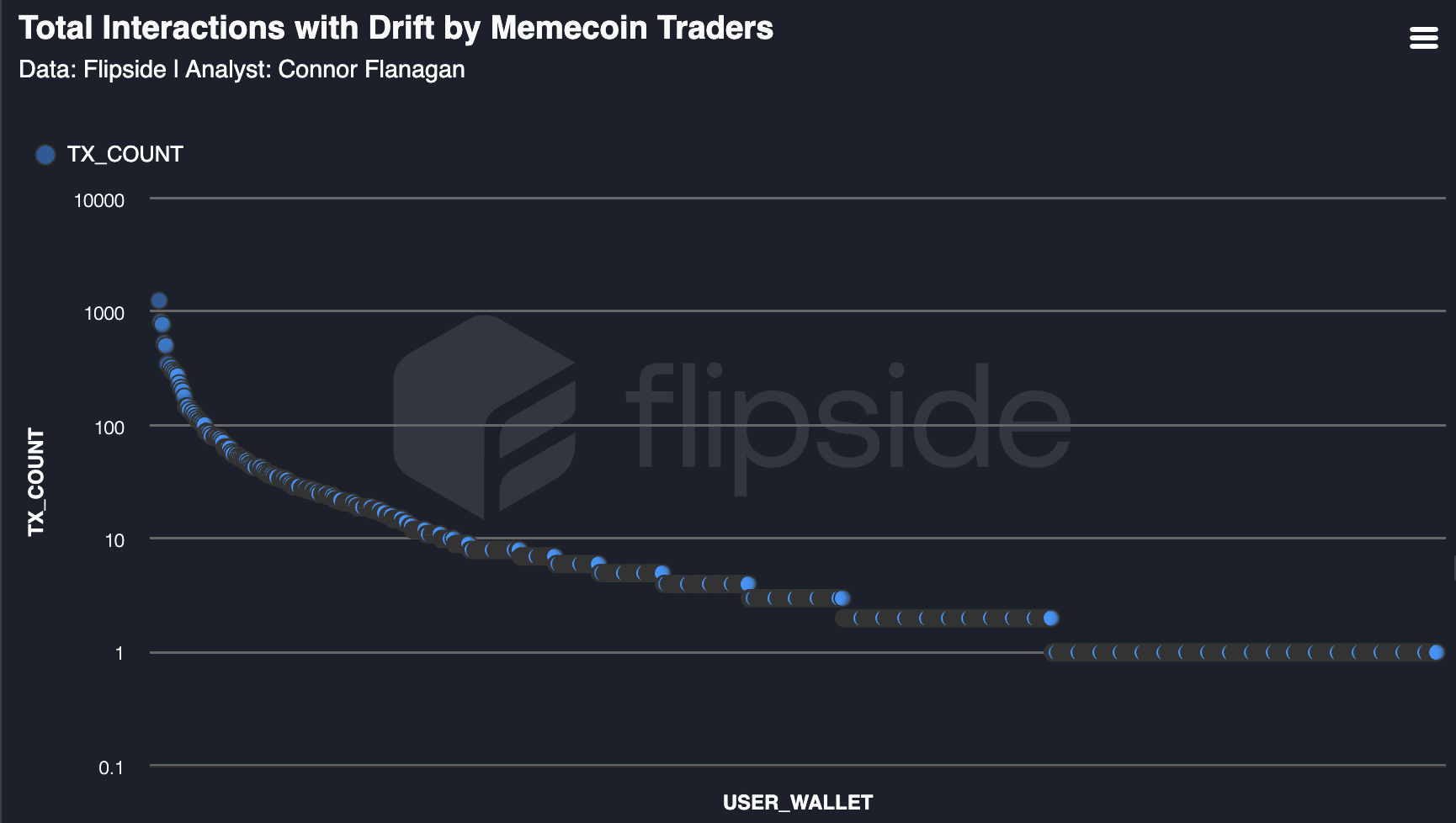
The logarithmic scale reveals a classic power law distribution—a small minority of users account for the vast majority of transactions, while most memecoin traders who ventured into these protocols did so minimally, often just a single time.
Beyond perps, another way of accessing leverage onchain is through lending markets, like MarginFi and Kamino.
Makes sense right? If the market is ripping and there are new runners everyday, depositing SOL, borrowing USDC and swapping that into new SOL to deploy in the next 100x is a solid strategy.
That being said, we see much of the same. Low usage dominated by a handful of accounts.
While more users leveraged lending markets vs. stepping deeper into the casino with Drift, only 0.29% of the 100,000 traders studied touched MarginFi, a majority of which only did so a handful of times:
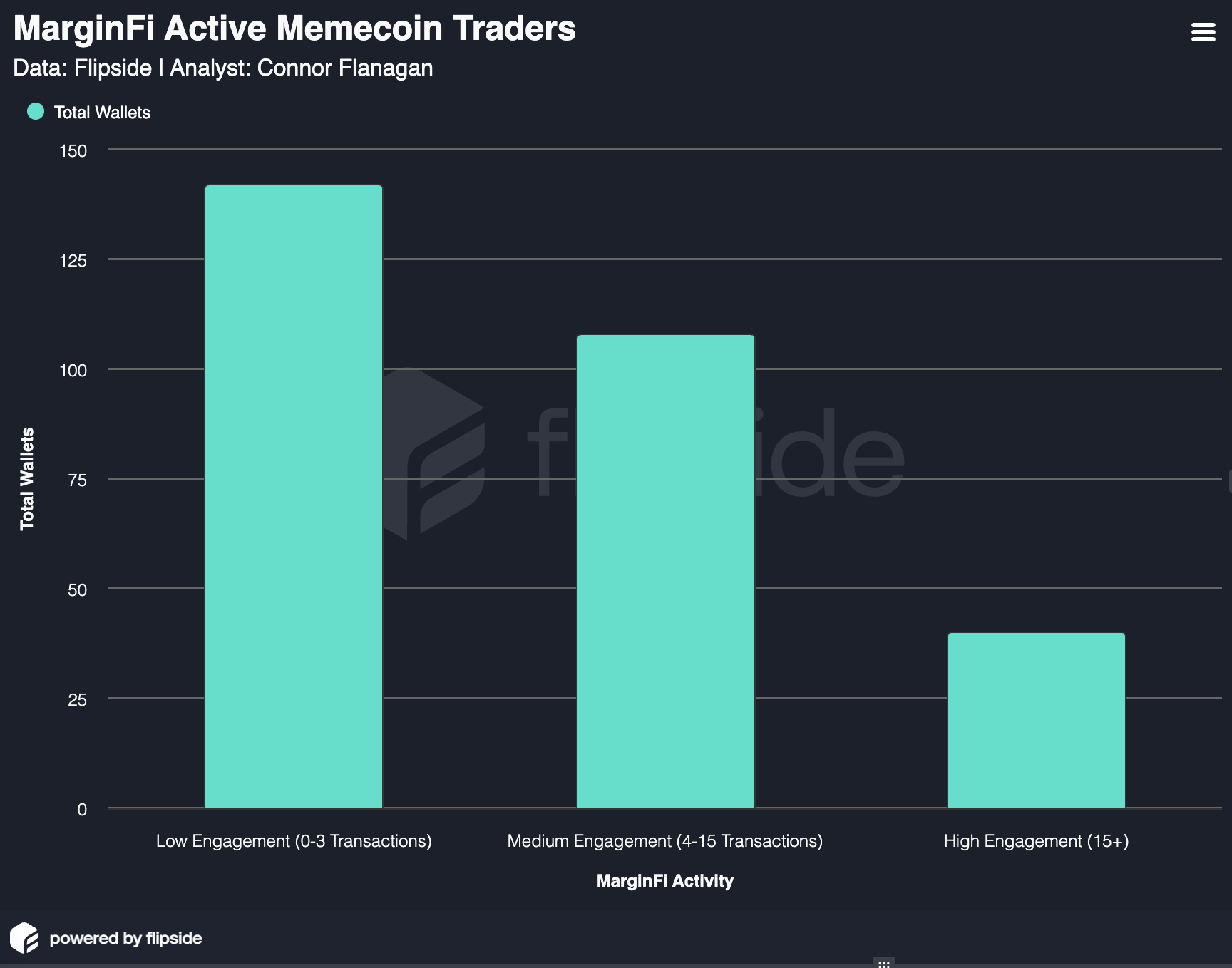
And even in this subset of users, very few actively borrowed against their collateral.
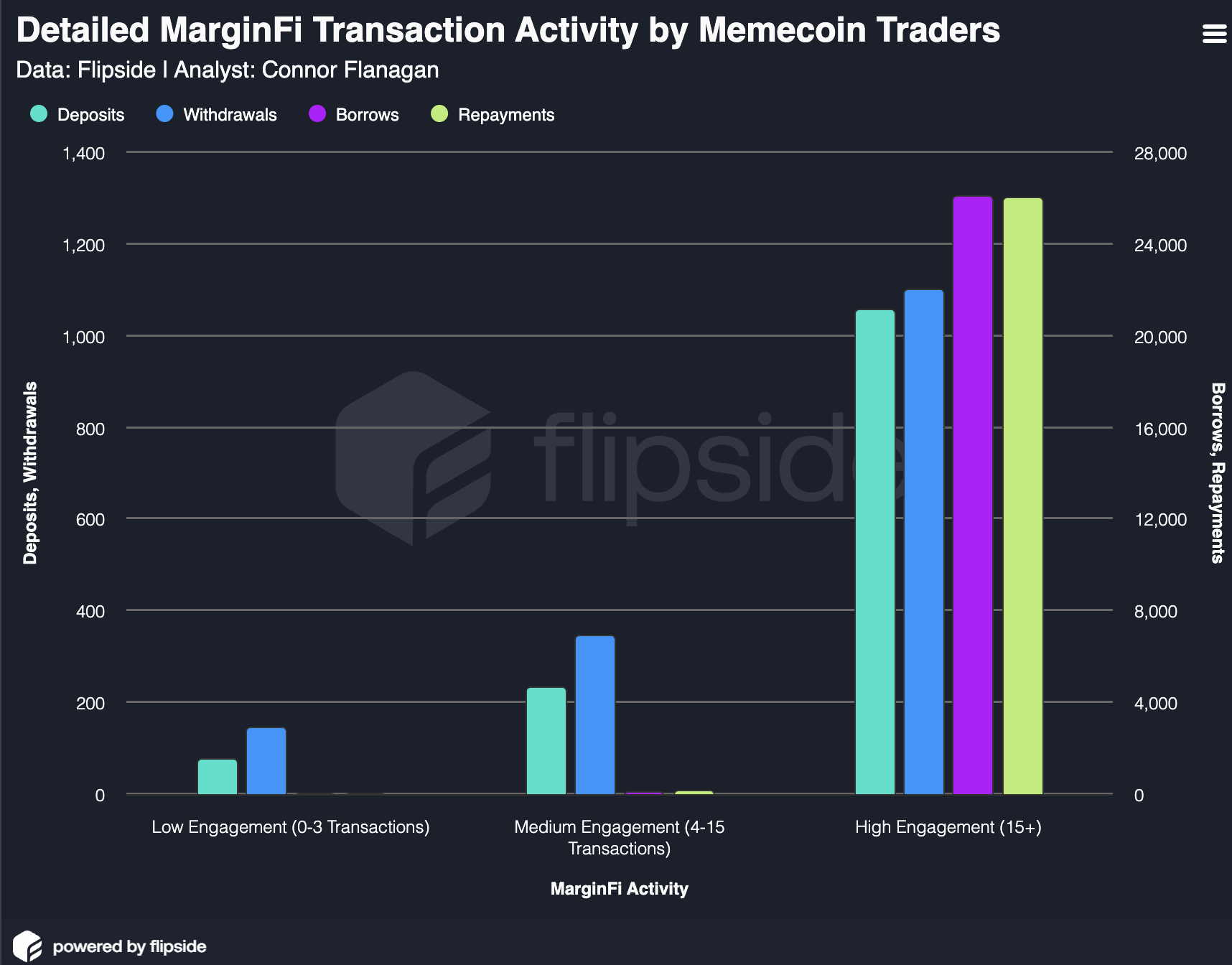
To not kill you with charts and analysis hitting on the same points, here’s Kamino showing the same trends:
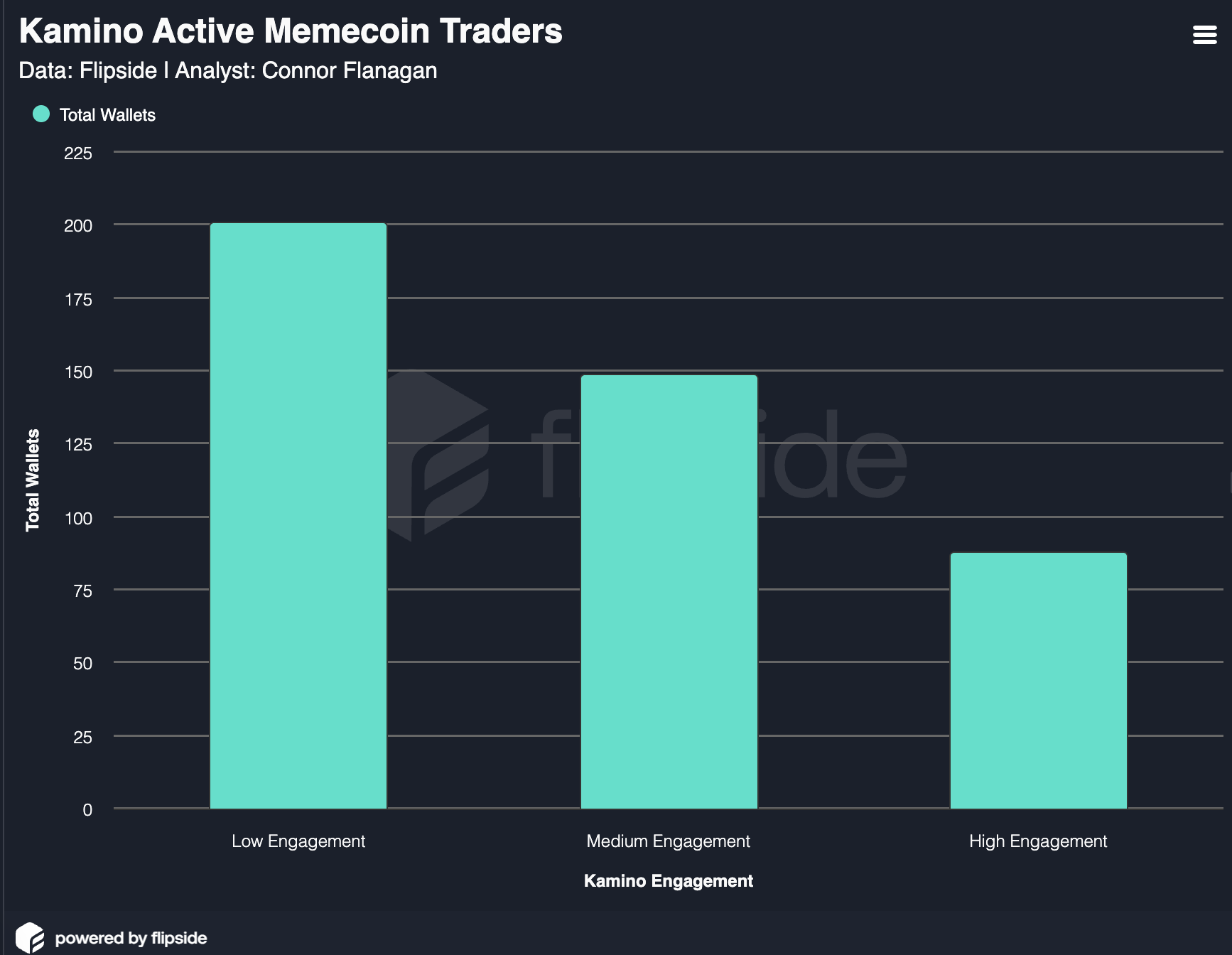
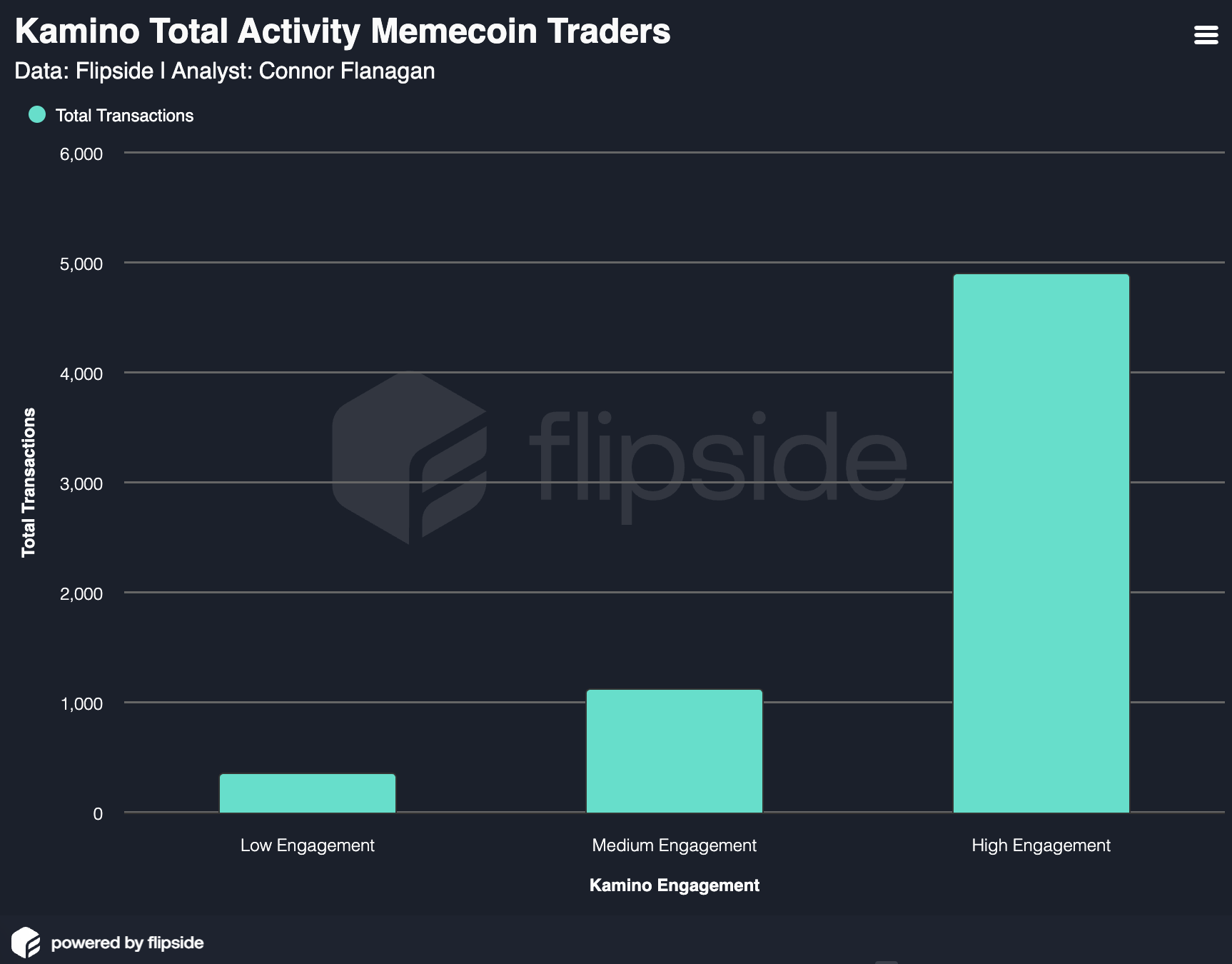
These types of power law distributions are nothing new in markets in general, let alone crypto where the whales have dominated for cycles.
This data deep-dive just goes to show that things aren’t as rosy as they seem when looking at the top-line metrics this industry loves - TVL, active addresses, etc.
If you spent months developing and deploying a memecoin strategy, you were never going to get the ecosystem growth that you desired.
Instead, you wasted money and time that could have been used to fight other battles.
Beyond Memecoins: Strategic Growth Alternatives
Rather than chasing fleeting trends that attract low-engagement users, ecosystems would benefit from two alternative strategies:
1. Double Down on Existing High-Value Users
Identify and invest in your existing high-LTV users. Our research consistently shows that addresses scoring 4+ on Flipside's User Score framework generate exponentially more economic value than lower-scoring addresses. These high-quality users not only create more transaction volume but also demonstrate longer retention and broader ecosystem participation.
[Double Inflection Point Slide]
2. Target Strategic User Segments
Identify niches where your ecosystem has natural advantages. Then locate high-LTV users already participating in these activities on other chains and target them with specific incentives and activations. These users have already demonstrated valuable behaviors, making them far more likely to become productive participants in your ecosystem.
Intelligence-Driven Growth: The Path Forward
The memecoin phenomenon illustrates a broader truth about Web3 growth: sustainable ecosystem development requires intelligence-driven strategies that prioritize user quality over quantity.
Rather than following every trend, ecosystem leaders should leverage comprehensive user data and behavioral analysis to inform targeted growth initiatives. Understanding which users generate genuine value—and why—provides the foundation for sustainable expansion.
By focusing on quality users from the outset, ecosystems can build stronger foundations that withstand market volatility and create genuine network effects that drive long-term success.
___________
At Flipside, we continue to help our partners implement Intelligence-Driven Growth strategies that target the right users with the right incentives at the right time. Sure, jellyjelly, FARTCOIN, and TRUMP provided a bit of fun and a few valuable lessons, but the future belongs to ecosystems that prioritize quality engagement over transient popularity.
Disclaimer: The content of this article solely reflects the author's opinion and does not represent the platform in any capacity. This article is not intended to serve as a reference for making investment decisions.
You may also like
Goldman Sachs: Tariffs will reduce U.S. jobs
Pi Network Unveils Ad Platform to Empower Developers and Fuel Growth

Ethereum Eyes $4.8K and Beyond After Breakout
Ethereum holds strong after a breakout, keeping the $4.8K target in play with eyes on $8.5K as a potential next stop.Can Ethereum Push to $8.5K Next?What to Watch Going Forward

Qubetics Offers 2789% ROI for Early Buyers as Immutable X and SUI Compete for the Best Coins to Buy This Month
Explore the best coins to buy this month with Qubetics, Immutable X, and SUI. Learn about Qubetics' QubeQode IDE and what sets these projects apart.Qubetics: QubeQode IDE—Empowering Blockchain DevelopersImmutable X: Scaling NFTs for the FutureSUI: A Next-Gen Blockchain with a Unique Consensus MechanismQubeQode IDE: Simplifying Blockchain DevelopmentConclusion

